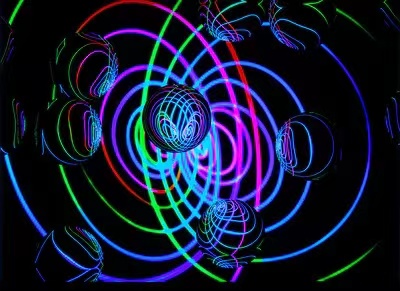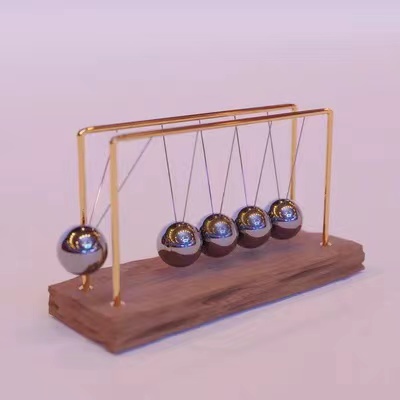创新背景
根据爱因斯坦的广义相对论预测,引力波是由大质量物体的某些运动在时空中产生的涟漪。它们对研究很重要,因为它们让我们能够探测到宇宙中发生的事件,否则这些事件几乎不会留下可观测的光,比如黑洞碰撞。
创新过程
伦敦大学学院、格罗宁根大学、华威大学的研究人员提出了一种比目前使用的探测器小4000倍的量子技术探测器,可以探测到中频引力波。
它的工作原理是使用重量为10^-17千克的纳米级钻石晶体。用Stern-Gerlach干涉测量法将这些晶体置于量子空间叠加态。空间叠加是一种量子态,晶体同时存在于两个不同的地方。

量子力学允许一个物体,无论多大,在空间上可以同时在两个不同的地方离域。尽管有违直觉,与我们的日常经验直接冲突,量子力学的叠加原理已经通过中子、电子、离子和分子的实验得到验证。
通讯作者Ryan Marshman (UCL物理与天文学和UCLQ)说:“使用叠加原理的量子引力传感器已经存在。这些传感器被用来测量牛顿引力,从而形成了非常精确的测量设备。目前的量子引力传感器使用的量子质量要小得多,比如原子,但实验工作正在推进新的干涉测量技术,这需要我们的设备工作以研究引力波。
“我们发现,与LIGO相比,我们的探测器可以探测到不同频率范围的引力波。只有当科学家们在太空中建造基线为数十万公里的大型探测器时,这些频率才可能可用。”

合著者Sougato Bose教授(UCL物理与天文学和UCLQ)说:“虽然我们提出的传感器在其范围内是雄心勃勃的,但似乎没有任何根本的或不可逾越的障碍,以使用当前和近期的未来技术来创造它。制造这个探测器的所有技术要素都是在世界各地的不同实验中分别实现的:所需的力、所需的真空质量、放置晶体的叠加方法。困难在于把它们放在一起,并确保叠加状态保持完整。”
下一步,该团队将与实验人员合作,开始构建该设备的原型。重要的是,正如伦敦大学学院和其他地方最近的工作所显示的那样,这类探测器也可以用于探测重力是否是一种量子力。
瑞恩·马希曼说:“事实上,我们最初的雄心是开发探索非经典引力的设备。但是,由于实现这样一个设备将是一个相当大的努力,我们认为这是非常重要的检查这种设备的有效性,也测量非常弱的经典引力,如引力波,并发现它是有前途的!”
创新价值
更小的探测器可以用来建立一个探测器网络,该网络将能够从背景噪声中挑选出引力波信号。这个网络还可能提供关于产生引力波的物体位置的精确信息。
创新关键点
使用重量为10^-17千克的纳米级钻石晶体。用Stern-Gerlach干涉测量法将这些晶体置于量子空间叠加态。空间叠加是一种量子态,晶体同时存在于两个不同的地方。
创新主体
伦敦大学学院(University College London,简称:UCL ),1826年创立于英国伦敦,是一所公立研究型大学,为伦敦大学联盟的创校学院、罗素大学集团和欧洲研究型大学联盟创始成员,被誉为金三角名校和“G5超级精英大学”之一。
UCL是伦敦的第一所大学,以其多元的学科设置著称,于REF 2014 英国大学官方排名中,位列全英之冠,享有最多的科研经费。UCL的医学、解剖学和生理学、建筑学、教育学、考古学、计算机科学、计算金融学等学科排名均位居世界前列,与LSE并称为“英国现代经济学研究的双子星”;其人文学院颁发的奥威尔奖则是政治写作界的最高荣誉。
The innovation of tiny diamond crystal is applied to gravitational wave detector
Researchers at University College London, the University of Groningen and the University of Warwick have proposed a quantum technology detector 4,000 times smaller than those currently in use that can detect gravitational waves at intermediate frequencies.
It works by using nanoscale diamond crystals weighing 10^-17 kg. Stern-gerlach interferometry was used to place these crystals in superposition states in quantum space. Spatial superposition is a quantum state in which crystals exist in two different places at the same time.
Quantum mechanics allows an object, no matter how large, to delocalize in space at the same time in two different places. Although counterintuitive and in direct conflict with our everyday experience, the superposition principle of quantum mechanics has been tested by experiments with neutrons, electrons, ions and molecules.
Corresponding author Ryan Marshman (UCL Physics and Astronomy and UCLQ) said: "Quantum gravity sensors using the superposition principle already exist. These sensors are used to measure Newtonian gravity, resulting in a very accurate measuring device. Current quantum gravity sensors use quantum masses that are much smaller, such as atoms, but experimental work is advancing new interferometry techniques that require our equipment to work to study gravitational waves.
"We found that our detectors can detect gravitational waves in different frequency ranges compared to LIGO. These frequencies may only be available when scientists build large probes in space with baselines of hundreds of thousands of kilometers."
Co-author Professor Sougato Bose (UCL Physics & Astronomy and UCLQ) said: "While our proposed sensor is ambitious in its scope, there do not appear to be any fundamental or insurmountable obstacles to creating it using current and near-future technologies. All the technical elements of making this detector were implemented separately in different experiments around the world: the force required, the vacuum mass required, the superposition method of placing the crystals. The difficulty is putting it all together and making sure the superposition stays intact."
The next step is for the team to work with experimenters to begin building a prototype of the device. Importantly, such detectors could also be used to detect whether gravity is a quantum force, as recent work at University College London and elsewhere has shown.
"In fact, our initial ambition was to develop devices to explore non-classical gravity," says Ryan Machman. But since implementing such a device would be a considerable effort, we think it is very important to check the effectiveness of such a device and also measure very weak classical gravitation, such as gravitational waves, and find that it is promising!"
智能推荐
大型强子对撞机升级有助于粒子物理学发展
2022-06-29借助大型强子对撞机升级更新氧离子、氢—氦对撞等物理实验。
涉及学科涉及领域研究方向旋转微波场制造电磁场实现分子气体冷却
2022-07-29利用旋转微波场制造电磁场,避免分子互相粘合,提高分子碰撞频率以实现蒸发冷却,将气体冷却到接近绝对零度。
涉及学科涉及领域研究方向AI+粒子物理学 | 使用机器学习方法创新开发“粒子流算法”
2022-11-22研究证明了人工智能在粒子物理研究领域的可用性。
涉及学科涉及领域研究方向使用新方法XLEAP可清晰观察化学过程中的电子
2022-08-17加州门洛帕克——能源部SLAC国家加速器实验室的研究人员发明了一种观察电子运动的方法,这种方法使用强度仅为280阿秒(十亿分之一秒)的强x射线激光爆发。
涉及学科涉及领域研究方向